steelchamp
gamer level 4
1986 xp
1986 xp
followers
0
0
Use my invite URL to register (this will give me kudos)
https://boardgaming.com/register/?invited_by=steel
profile badges




recent achievements

The Bronze Heart
Give 10 Bronze Hearts to games that you like.
Give 10 Bronze Hearts to games that you like.

I'm a Real Player!
Claim that you have played a game today by clicking the "Played Today!" button on a game page 25 times.
Claim that you have played a game today by clicking the "Played Today!" button on a game page 25 times.

Zealot
Give 50 hearts (loyalty points) to a single game
Give 50 hearts (loyalty points) to a single game

Gamer - Level 4
Earn Gamer XP to level up!
Earn Gamer XP to level up!
Player Stats
Critic (lvl 1)
200 xp
200 xp
Explorer (lvl 2)
502 xp
502 xp
Professor (lvl 1)
146 xp
146 xp
Reporter (lvl 1)
162 xp
162 xp
About Me
Role-playing, and games which don't completely rely on luck!
steelchamp's Followers (0)
No Followers Yet









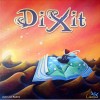


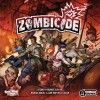















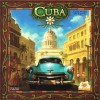



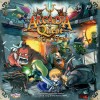



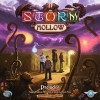



The Pillars of the Earth
This game is easily both a fantastic intro game to worker-placement, and also sits atop a pillar of the earth to veteran gamers alike.
The rulebook is very well laid out. It’s laid out in such a way that it tells you how to set up, then allows you to read a paragraph, play the first round, read the next paragraph, play the second round, and so on. As this is the case (also, nothing is secret from other players – everyone can see everything belonging to everyone else) this also makes it so easy to teach.
Luck is negligible. There are 2 occasions where luck is used (except for the card drafting mechanics which is visible before anyone takes their turn) and that is:
1. Tax. Everyone round, everyone must pay tax, unless they place one of their 3 workers in a particular spot on the board during the worker-placement phase (therefore, this is totally avoidable).
2. Workers being drawn from the bag. Each player has 3 workers which are all put in a bag, and turn order is decided based on the order of which each worker is pulled from the bag. You may think this would be a game-breaker with regard to luck, but it is not. If you’re drawn first, you could choose to take your turn first or wait until other people have had their turns. If you choose to go first, you must pay up to 7 gold. If you choose to go last, you will pay decreasing amounts based on turn order, and potentially pay 0 gold. Therefore, there are advantages of both waiting, and going first (going first would give you prime pickings of the available spots on the board).
There are 3 phases to the game:
Phase 1; Resource allocation: Take it in turns to place your meeples on certain resources (each card with resources on can only be taken once during this phase)
Phase 2; Master Builders: This is the point where your workers are drawn from the bag and you can choose what you want to do with your round, placing your workers on particular spots on the board.
Phase 3; Resolution: Resolve the board as clearly numbered in order.
Before moving onto the next round, you can cash in some resources for VP. After doing so, you start the process again. There are a total of 6 rounds per game.
The game can play 2-4 players, though it does play a little slow and it does have a few flaws when played with only 2. However, with 3-4, this game is simply immaculate. The only improvement they could have made with this game, is improving the way 2-player works. Everything else about this game really does make this game such an amazing worker-placement game which other games can aspire to.
If you’re looking for a 3-4 player worker-placement game, try and get a hold of a copy of this game, you won’t regret it. If you only want a 2 player game or you need more than 4, then you may want to look elsewhere. There is an expansion which allows up to 6 players, but it’s really not easy to find!